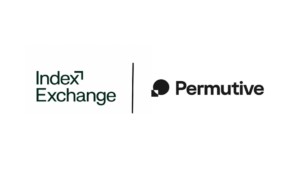By Steve Pereira, UK President, Captify
The modern customer journey is increasingly complex. In an ideal scenario, businesses connect with consumers at the top of the funnel early in their buying journey, encouraging those consumers to view items, add relevant products to their cart online, and ultimately make a purchase. But the path for marketers to understand how or why someone makes a purchase is not as straight or seamless as that—it’s a maze filled with multiple touchpoints across screens, channels and devices.
Heightening this challenge, brands are bracing for a potential economic downturn, which means ad dollars will have to work harder and more efficiently with return on spend under the microscope. To make smart investment decisions in the face of changing market dynamics and consumer behaviours, brands and advertisers will need to lean into intent signals for a much fuller, more real-time consumer picture to beat the competition and drive results amidst these constant shifts.
To gain the foresight to act on real opportunities in the constantly changing market, brands and advertisers can utilise intent signals to target audiences with imminent real-time needs, whether they are shopping online or viewing their favourite TV show. Intent data uncovers not just motives to buy, but insights into what triggers behaviours, predicted next steps and what influences a customer journey. Indicator signals help tell, and uncover, real stories — not just focusing on one-dimensional metrics like cost-per-action.
Economic Uncertainty and the Rise of Consumer Intent
Citing an estimated 10% inflation rate by the end of the year, the ongoing Russian war in Ukraine and COVID-related lockdowns and pressure throughout the world, economists have predicted a potential recession sometime soon.
While businesses are tightening budgets to compensate for rising costs and supply chain issues, consumers have slowed their spending. This should cause marketers to try to balance their efforts — monitoring costs while reigniting the funnel for better consumer insights to support campaigns in the long term.
So-called intent signals, which are digital data points that indicate consumer purchase interest or interactions with a brand, offer an extremely versatile solution to acquire and retain customers while facing such an uncertain future. With third-party cookies expected to deprecate in 2023, access to true intent signals will be much harder to access. The ability to glean intent from compliant datasets will be that much more valuable.
Proactive businesses that act upon such data can reach recession-minded consumers earlier in the buying process. By being able to identify a prospect’s interest sooner, businesses will acquire and retain the right customers to navigate the uncertainty ahead and beat competitors to the punch. Here are some of the benefits of signals for marketers.
Balanced Insight Enrichment
Marketers and advertisers must be empowered to make decisions using the data they have. This means accessing the right data and using that to power the strategies to pinpoint the audiences they are targeting. They must find out who their ideal audience is, what they buy, what influences them, and more.
Targeting New and Hard-to-Reach Audiences
Signals are one of the clearest ways to cut through the noise and allow brands to truly understand the aims and objectives of new audiences — especially which channels influence them. Intent data also helps identify the nuances in wider social and cultural demographics, as well as challenge the assumptions that can uncover new audience preferences in a more organic and privacy-safe way.
The most important point is that consumers don’t fit neatly into easily defined buckets. It’s not about gender, ethnicity, age or sexual orientation. Consumers are dynamic, and in many cases, there is no correlation between these labels and consumer buying behaviour. Targeting consumers purely based on what they read or websites they visit fails to provide information on why they are there in the first place. For example, someone reading content on a certain political party does not mean they are affiliated with or are in support of that party’s political views. Marketers can, however, determine details such as level of interest in politics from this and other behavioural data points like it.
Data Validation
The single greatest challenge facing marketers is finding data that provides the right insights, and efficiently activating that data. A brand can save time and marketing costs by targeting the potential audiences that show intent with personalised, relevant offers when they are already taking action. But it’s no use just having intent. Marketers need to make sense of the data sets, or they risk misinterpretation — even worse — misuse.
For example, it’s very easy to pinpoint intent-based audiences interested in cars. But how can they ascertain which of those consumers are truly in the market to purchase a car versus those who just watched the latest 007 film and enjoy browsing the Aston Martin website? Not only does signal marketing give businesses a window into knowing what channels work best, but it also illustrates the right audiences within those channels.
Due to intent signals’ unique ability to validate consumer intentions and their link to purchase behaviour and strength in validation, now is the time to include them in all marketing strategies to ensure the most positive outcome and add value to every plan. Using such data helps brands better relate to and engage with their audiences, which is exactly what they need right now given the economic atmosphere of the moment.












